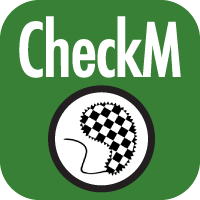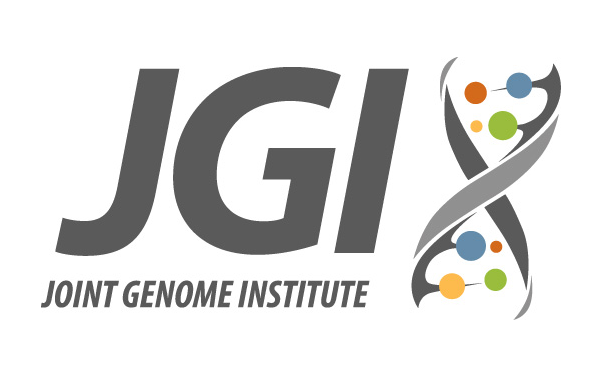Some RAST tools will not run unless the taxonomic domain is Archaea, Bacteria, or Virus.
These tools include: call selenoproteins, call pyrroysoproteins, call crisprs, and call prophage phispy features.
You may not get the results you were expecting with your current domain of U.
The RAST algorithm was applied to annotating a genome sequence comprised of 424 contigs containing 1513515 nucleotides.
No initial gene calls were provided.
Did not call selenoproteins because the domain is U
Did not call pyrrolysoproteins because the domain is U
Did not call crisprs because the domain is U
Standard features were called using: glimmer3; prodigal.
A scan was conducted for the following additional feature types: rRNA; tRNA; repeat regions.
The genome features were functionally annotated using the following algorithm(s): Kmers V2; Kmers V1; protein similarity.
In addition to the remaining original 0 coding features and 0 non-coding features, 1899 new features were called, of which 30 are non-coding.
Output genome has the following feature types:
Coding gene 1869
Non-coding repeat 22
Non-coding rna 8
Overall, the genes have 0 distinct functions.
The genes include 0 genes with a SEED annotation ontology across 0 distinct SEED functions.
The number of distinct functions can exceed the number of genes because some genes have multiple functions.
bin.007.fasta_DBSC_T0-dastool__assembly succeeded!
Some RAST tools will not run unless the taxonomic domain is Archaea, Bacteria, or Virus.
These tools include: call selenoproteins, call pyrroysoproteins, call crisprs, and call prophage phispy features.
You may not get the results you were expecting with your current domain of U.
The RAST algorithm was applied to annotating a genome sequence comprised of 152 contigs containing 813033 nucleotides.
No initial gene calls were provided.
Did not call selenoproteins because the domain is U
Did not call pyrrolysoproteins because the domain is U
Did not call crisprs because the domain is U
Standard features were called using: glimmer3; prodigal.
A scan was conducted for the following additional feature types: rRNA; tRNA; repeat regions.
The genome features were functionally annotated using the following algorithm(s): Kmers V2; Kmers V1; protein similarity.
In addition to the remaining original 0 coding features and 0 non-coding features, 913 new features were called, of which 26 are non-coding.
Output genome has the following feature types:
Coding gene 887
Non-coding rna 26
Overall, the genes have 0 distinct functions.
The genes include 0 genes with a SEED annotation ontology across 0 distinct SEED functions.
The number of distinct functions can exceed the number of genes because some genes have multiple functions.
bin.008.fasta_DBSC_T0-dastool__assembly succeeded!
Some RAST tools will not run unless the taxonomic domain is Archaea, Bacteria, or Virus.
These tools include: call selenoproteins, call pyrroysoproteins, call crisprs, and call prophage phispy features.
You may not get the results you were expecting with your current domain of U.
The RAST algorithm was applied to annotating a genome sequence comprised of 64 contigs containing 5923365 nucleotides.
No initial gene calls were provided.
Did not call selenoproteins because the domain is U
Did not call pyrrolysoproteins because the domain is U
Did not call crisprs because the domain is U
Standard features were called using: glimmer3; prodigal.
A scan was conducted for the following additional feature types: rRNA; tRNA; repeat regions.
The genome features were functionally annotated using the following algorithm(s): Kmers V2; Kmers V1; protein similarity.
In addition to the remaining original 0 coding features and 0 non-coding features, 6103 new features were called, of which 90 are non-coding.
Output genome has the following feature types:
Coding gene 6013
Non-coding repeat 46
Non-coding rna 44
Overall, the genes have 0 distinct functions.
The genes include 0 genes with a SEED annotation ontology across 0 distinct SEED functions.
The number of distinct functions can exceed the number of genes because some genes have multiple functions.
bin.005.fasta_DBSC_T0-dastool__assembly succeeded!
Some RAST tools will not run unless the taxonomic domain is Archaea, Bacteria, or Virus.
These tools include: call selenoproteins, call pyrroysoproteins, call crisprs, and call prophage phispy features.
You may not get the results you were expecting with your current domain of U.
The RAST algorithm was applied to annotating a genome sequence comprised of 210 contigs containing 2822742 nucleotides.
No initial gene calls were provided.
Did not call selenoproteins because the domain is U
Did not call pyrrolysoproteins because the domain is U
Did not call crisprs because the domain is U
Standard features were called using: glimmer3; prodigal.
A scan was conducted for the following additional feature types: rRNA; tRNA; repeat regions.
The genome features were functionally annotated using the following algorithm(s): Kmers V2; Kmers V1; protein similarity.
In addition to the remaining original 0 coding features and 0 non-coding features, 2932 new features were called, of which 40 are non-coding.
Output genome has the following feature types:
Coding gene 2892
Non-coding repeat 10
Non-coding rna 30
Overall, the genes have 0 distinct functions.
The genes include 0 genes with a SEED annotation ontology across 0 distinct SEED functions.
The number of distinct functions can exceed the number of genes because some genes have multiple functions.
bin.029.fasta_DBSC_T0-dastool__assembly succeeded!
Some RAST tools will not run unless the taxonomic domain is Archaea, Bacteria, or Virus.
These tools include: call selenoproteins, call pyrroysoproteins, call crisprs, and call prophage phispy features.
You may not get the results you were expecting with your current domain of U.
The RAST algorithm was applied to annotating a genome sequence comprised of 315 contigs containing 3091155 nucleotides.
No initial gene calls were provided.
Did not call selenoproteins because the domain is U
Did not call pyrrolysoproteins because the domain is U
Did not call crisprs because the domain is U
Standard features were called using: glimmer3; prodigal.
A scan was conducted for the following additional feature types: rRNA; tRNA; repeat regions.
The genome features were functionally annotated using the following algorithm(s): Kmers V2; Kmers V1; protein similarity.
In addition to the remaining original 0 coding features and 0 non-coding features, 3198 new features were called, of which 53 are non-coding.
Output genome has the following feature types:
Coding gene 3145
Non-coding repeat 22
Non-coding rna 31
Overall, the genes have 0 distinct functions.
The genes include 0 genes with a SEED annotation ontology across 0 distinct SEED functions.
The number of distinct functions can exceed the number of genes because some genes have multiple functions.
bin.006.fasta_DBSC_T0-dastool__assembly succeeded!
Some RAST tools will not run unless the taxonomic domain is Archaea, Bacteria, or Virus.
These tools include: call selenoproteins, call pyrroysoproteins, call crisprs, and call prophage phispy features.
You may not get the results you were expecting with your current domain of U.
The RAST algorithm was applied to annotating a genome sequence comprised of 76 contigs containing 3734877 nucleotides.
No initial gene calls were provided.
Did not call selenoproteins because the domain is U
Did not call pyrrolysoproteins because the domain is U
Did not call crisprs because the domain is U
Standard features were called using: glimmer3; prodigal.
A scan was conducted for the following additional feature types: rRNA; tRNA; repeat regions.
The genome features were functionally annotated using the following algorithm(s): Kmers V2; Kmers V1; protein similarity.
In addition to the remaining original 0 coding features and 0 non-coding features, 3755 new features were called, of which 71 are non-coding.
Output genome has the following feature types:
Coding gene 3684
Non-coding repeat 28
Non-coding rna 43
Overall, the genes have 0 distinct functions.
The genes include 0 genes with a SEED annotation ontology across 0 distinct SEED functions.
The number of distinct functions can exceed the number of genes because some genes have multiple functions.
bin.028.fasta_DBSC_T0-dastool__assembly succeeded!
Some RAST tools will not run unless the taxonomic domain is Archaea, Bacteria, or Virus.
These tools include: call selenoproteins, call pyrroysoproteins, call crisprs, and call prophage phispy features.
You may not get the results you were expecting with your current domain of U.
The RAST algorithm was applied to annotating a genome sequence comprised of 255 contigs containing 4497678 nucleotides.
No initial gene calls were provided.
Did not call selenoproteins because the domain is U
Did not call pyrrolysoproteins because the domain is U
Did not call crisprs because the domain is U
Standard features were called using: glimmer3; prodigal.
A scan was conducted for the following additional feature types: rRNA; tRNA; repeat regions.
The genome features were functionally annotated using the following algorithm(s): Kmers V2; Kmers V1; protein similarity.
In addition to the remaining original 0 coding features and 0 non-coding features, 4527 new features were called, of which 61 are non-coding.
Output genome has the following feature types:
Coding gene 4466
Non-coding repeat 24
Non-coding rna 37
Overall, the genes have 0 distinct functions.
The genes include 0 genes with a SEED annotation ontology across 0 distinct SEED functions.
The number of distinct functions can exceed the number of genes because some genes have multiple functions.
bin.004.fasta_DBSC_T0-dastool__assembly succeeded!
Some RAST tools will not run unless the taxonomic domain is Archaea, Bacteria, or Virus.
These tools include: call selenoproteins, call pyrroysoproteins, call crisprs, and call prophage phispy features.
You may not get the results you were expecting with your current domain of U.
The RAST algorithm was applied to annotating a genome sequence comprised of 166 contigs containing 2396530 nucleotides.
No initial gene calls were provided.
Did not call selenoproteins because the domain is U
Did not call pyrrolysoproteins because the domain is U
Did not call crisprs because the domain is U
Standard features were called using: glimmer3; prodigal.
A scan was conducted for the following additional feature types: rRNA; tRNA; repeat regions.
The genome features were functionally annotated using the following algorithm(s): Kmers V2; Kmers V1; protein similarity.
In addition to the remaining original 0 coding features and 0 non-coding features, 2288 new features were called, of which 42 are non-coding.
Output genome has the following feature types:
Coding gene 2246
Non-coding repeat 10
Non-coding rna 32
Overall, the genes have 0 distinct functions.
The genes include 0 genes with a SEED annotation ontology across 0 distinct SEED functions.
The number of distinct functions can exceed the number of genes because some genes have multiple functions.
bin.027.fasta_DBSC_T0-dastool__assembly succeeded!
Some RAST tools will not run unless the taxonomic domain is Archaea, Bacteria, or Virus.
These tools include: call selenoproteins, call pyrroysoproteins, call crisprs, and call prophage phispy features.
You may not get the results you were expecting with your current domain of U.
The RAST algorithm was applied to annotating a genome sequence comprised of 502 contigs containing 2162247 nucleotides.
No initial gene calls were provided.
Did not call selenoproteins because the domain is U
Did not call pyrrolysoproteins because the domain is U
Did not call crisprs because the domain is U
Standard features were called using: glimmer3; prodigal.
A scan was conducted for the following additional feature types: rRNA; tRNA; repeat regions.
The genome features were functionally annotated using the following algorithm(s): Kmers V2; Kmers V1; protein similarity.
In addition to the remaining original 0 coding features and 0 non-coding features, 2574 new features were called, of which 45 are non-coding.
Output genome has the following feature types:
Coding gene 2529
Non-coding repeat 8
Non-coding rna 37
Overall, the genes have 0 distinct functions.
The genes include 0 genes with a SEED annotation ontology across 0 distinct SEED functions.
The number of distinct functions can exceed the number of genes because some genes have multiple functions.
bin.025.fasta_DBSC_T0-dastool__assembly succeeded!
Some RAST tools will not run unless the taxonomic domain is Archaea, Bacteria, or Virus.
These tools include: call selenoproteins, call pyrroysoproteins, call crisprs, and call prophage phispy features.
You may not get the results you were expecting with your current domain of U.
The RAST algorithm was applied to annotating a genome sequence comprised of 102 contigs containing 3472457 nucleotides.
No initial gene calls were provided.
Did not call selenoproteins because the domain is U
Did not call pyrrolysoproteins because the domain is U
Did not call crisprs because the domain is U
Standard features were called using: glimmer3; prodigal.
A scan was conducted for the following additional feature types: rRNA; tRNA; repeat regions.
The genome features were functionally annotated using the following algorithm(s): Kmers V2; Kmers V1; protein similarity.
In addition to the remaining original 0 coding features and 0 non-coding features, 3384 new features were called, of which 63 are non-coding.
Output genome has the following feature types:
Coding gene 3321
Non-coding repeat 16
Non-coding rna 47
Overall, the genes have 0 distinct functions.
The genes include 0 genes with a SEED annotation ontology across 0 distinct SEED functions.
The number of distinct functions can exceed the number of genes because some genes have multiple functions.
bin.024.fasta_DBSC_T0-dastool__assembly succeeded!
Some RAST tools will not run unless the taxonomic domain is Archaea, Bacteria, or Virus.
These tools include: call selenoproteins, call pyrroysoproteins, call crisprs, and call prophage phispy features.
You may not get the results you were expecting with your current domain of U.
The RAST algorithm was applied to annotating a genome sequence comprised of 14 contigs containing 5699292 nucleotides.
No initial gene calls were provided.
Did not call selenoproteins because the domain is U
Did not call pyrrolysoproteins because the domain is U
Did not call crisprs because the domain is U
Standard features were called using: glimmer3; prodigal.
A scan was conducted for the following additional feature types: rRNA; tRNA; repeat regions.
The genome features were functionally annotated using the following algorithm(s): Kmers V2; Kmers V1; protein similarity.
In addition to the remaining original 0 coding features and 0 non-coding features, 5294 new features were called, of which 88 are non-coding.
Output genome has the following feature types:
Coding gene 5206
Non-coding repeat 37
Non-coding rna 51
Overall, the genes have 0 distinct functions.
The genes include 0 genes with a SEED annotation ontology across 0 distinct SEED functions.
The number of distinct functions can exceed the number of genes because some genes have multiple functions.
bin.023.fasta_DBSC_T0-dastool__assembly succeeded!
Some RAST tools will not run unless the taxonomic domain is Archaea, Bacteria, or Virus.
These tools include: call selenoproteins, call pyrroysoproteins, call crisprs, and call prophage phispy features.
You may not get the results you were expecting with your current domain of U.
The RAST algorithm was applied to annotating a genome sequence comprised of 246 contigs containing 3883314 nucleotides.
No initial gene calls were provided.
Did not call selenoproteins because the domain is U
Did not call pyrrolysoproteins because the domain is U
Did not call crisprs because the domain is U
Standard features were called using: glimmer3; prodigal.
A scan was conducted for the following additional feature types: rRNA; tRNA; repeat regions.
The genome features were functionally annotated using the following algorithm(s): Kmers V2; Kmers V1; protein similarity.
In addition to the remaining original 0 coding features and 0 non-coding features, 3893 new features were called, of which 44 are non-coding.
Output genome has the following feature types:
Coding gene 3849
Non-coding repeat 20
Non-coding rna 24
Overall, the genes have 0 distinct functions.
The genes include 0 genes with a SEED annotation ontology across 0 distinct SEED functions.
The number of distinct functions can exceed the number of genes because some genes have multiple functions.
bin.050.fasta_DBSC_T0-dastool__assembly succeeded!
Some RAST tools will not run unless the taxonomic domain is Archaea, Bacteria, or Virus.
These tools include: call selenoproteins, call pyrroysoproteins, call crisprs, and call prophage phispy features.
You may not get the results you were expecting with your current domain of U.
The RAST algorithm was applied to annotating a genome sequence comprised of 167 contigs containing 3300905 nucleotides.
No initial gene calls were provided.
Did not call selenoproteins because the domain is U
Did not call pyrrolysoproteins because the domain is U
Did not call crisprs because the domain is U
Standard features were called using: glimmer3; prodigal.
A scan was conducted for the following additional feature types: rRNA; tRNA; repeat regions.
The genome features were functionally annotated using the following algorithm(s): Kmers V2; Kmers V1; protein similarity.
In addition to the remaining original 0 coding features and 0 non-coding features, 3356 new features were called, of which 48 are non-coding.
Output genome has the following feature types:
Coding gene 3308
Non-coding repeat 9
Non-coding rna 39
Overall, the genes have 0 distinct functions.
The genes include 0 genes with a SEED annotation ontology across 0 distinct SEED functions.
The number of distinct functions can exceed the number of genes because some genes have multiple functions.
bin.022.fasta_DBSC_T0-dastool__assembly succeeded!
Some RAST tools will not run unless the taxonomic domain is Archaea, Bacteria, or Virus.
These tools include: call selenoproteins, call pyrroysoproteins, call crisprs, and call prophage phispy features.
You may not get the results you were expecting with your current domain of U.
The RAST algorithm was applied to annotating a genome sequence comprised of 299 contigs containing 2301479 nucleotides.
No initial gene calls were provided.
Did not call selenoproteins because the domain is U
Did not call pyrrolysoproteins because the domain is U
Did not call crisprs because the domain is U
Standard features were called using: glimmer3; prodigal.
A scan was conducted for the following additional feature types: rRNA; tRNA; repeat regions.
The genome features were functionally annotated using the following algorithm(s): Kmers V2; Kmers V1; protein similarity.
In addition to the remaining original 0 coding features and 0 non-coding features, 2560 new features were called, of which 50 are non-coding.
Output genome has the following feature types:
Coding gene 2510
Non-coding repeat 16
Non-coding rna 34
Overall, the genes have 0 distinct functions.
The genes include 0 genes with a SEED annotation ontology across 0 distinct SEED functions.
The number of distinct functions can exceed the number of genes because some genes have multiple functions.
bin.049.fasta_DBSC_T0-dastool__assembly succeeded!
Some RAST tools will not run unless the taxonomic domain is Archaea, Bacteria, or Virus.
These tools include: call selenoproteins, call pyrroysoproteins, call crisprs, and call prophage phispy features.
You may not get the results you were expecting with your current domain of U.
The RAST algorithm was applied to annotating a genome sequence comprised of 621 contigs containing 5090540 nucleotides.
No initial gene calls were provided.
Did not call selenoproteins because the domain is U
Did not call pyrrolysoproteins because the domain is U
Did not call crisprs because the domain is U
Standard features were called using: glimmer3; prodigal.
A scan was conducted for the following additional feature types: rRNA; tRNA; repeat regions.
The genome features were functionally annotated using the following algorithm(s): Kmers V2; Kmers V1; protein similarity.
In addition to the remaining original 0 coding features and 0 non-coding features, 5062 new features were called, of which 43 are non-coding.
Output genome has the following feature types:
Coding gene 5019
Non-coding repeat 8
Non-coding rna 35
Overall, the genes have 0 distinct functions.
The genes include 0 genes with a SEED annotation ontology across 0 distinct SEED functions.
The number of distinct functions can exceed the number of genes because some genes have multiple functions.
bin.003.fasta_DBSC_T0-dastool__assembly succeeded!
Some RAST tools will not run unless the taxonomic domain is Archaea, Bacteria, or Virus.
These tools include: call selenoproteins, call pyrroysoproteins, call crisprs, and call prophage phispy features.
You may not get the results you were expecting with your current domain of U.
The RAST algorithm was applied to annotating a genome sequence comprised of 79 contigs containing 3066097 nucleotides.
No initial gene calls were provided.
Did not call selenoproteins because the domain is U
Did not call pyrrolysoproteins because the domain is U
Did not call crisprs because the domain is U
Standard features were called using: glimmer3; prodigal.
A scan was conducted for the following additional feature types: rRNA; tRNA; repeat regions.
The genome features were functionally annotated using the following algorithm(s): Kmers V2; Kmers V1; protein similarity.
In addition to the remaining original 0 coding features and 0 non-coding features, 2695 new features were called, of which 47 are non-coding.
Output genome has the following feature types:
Coding gene 2648
Non-coding repeat 8
Non-coding rna 39
Overall, the genes have 0 distinct functions.
The genes include 0 genes with a SEED annotation ontology across 0 distinct SEED functions.
The number of distinct functions can exceed the number of genes because some genes have multiple functions.
bin.021.fasta_DBSC_T0-dastool__assembly succeeded!
Some RAST tools will not run unless the taxonomic domain is Archaea, Bacteria, or Virus.
These tools include: call selenoproteins, call pyrroysoproteins, call crisprs, and call prophage phispy features.
You may not get the results you were expecting with your current domain of U.
The RAST algorithm was applied to annotating a genome sequence comprised of 376 contigs containing 2268695 nucleotides.
No initial gene calls were provided.
Did not call selenoproteins because the domain is U
Did not call pyrrolysoproteins because the domain is U
Did not call crisprs because the domain is U
Standard features were called using: glimmer3; prodigal.
A scan was conducted for the following additional feature types: rRNA; tRNA; repeat regions.
The genome features were functionally annotated using the following algorithm(s): Kmers V2; Kmers V1; protein similarity.
In addition to the remaining original 0 coding features and 0 non-coding features, 2157 new features were called, of which 15 are non-coding.
Output genome has the following feature types:
Coding gene 2142
Non-coding rna 15
Overall, the genes have 0 distinct functions.
The genes include 0 genes with a SEED annotation ontology across 0 distinct SEED functions.
The number of distinct functions can exceed the number of genes because some genes have multiple functions.
bin.019.fasta_DBSC_T0-dastool__assembly succeeded!
Some RAST tools will not run unless the taxonomic domain is Archaea, Bacteria, or Virus.
These tools include: call selenoproteins, call pyrroysoproteins, call crisprs, and call prophage phispy features.
You may not get the results you were expecting with your current domain of U.
The RAST algorithm was applied to annotating a genome sequence comprised of 692 contigs containing 3867563 nucleotides.
No initial gene calls were provided.
Did not call selenoproteins because the domain is U
Did not call pyrrolysoproteins because the domain is U
Did not call crisprs because the domain is U
Standard features were called using: glimmer3; prodigal.
A scan was conducted for the following additional feature types: rRNA; tRNA; repeat regions.
The genome features were functionally annotated using the following algorithm(s): Kmers V2; Kmers V1; protein similarity.
In addition to the remaining original 0 coding features and 0 non-coding features, 4128 new features were called, of which 31 are non-coding.
Output genome has the following feature types:
Coding gene 4097
Non-coding repeat 6
Non-coding rna 25
Overall, the genes have 0 distinct functions.
The genes include 0 genes with a SEED annotation ontology across 0 distinct SEED functions.
The number of distinct functions can exceed the number of genes because some genes have multiple functions.
bin.048.fasta_DBSC_T0-dastool__assembly succeeded!
Some RAST tools will not run unless the taxonomic domain is Archaea, Bacteria, or Virus.
These tools include: call selenoproteins, call pyrroysoproteins, call crisprs, and call prophage phispy features.
You may not get the results you were expecting with your current domain of U.
The RAST algorithm was applied to annotating a genome sequence comprised of 204 contigs containing 2429254 nucleotides.
No initial gene calls were provided.
Did not call selenoproteins because the domain is U
Did not call pyrrolysoproteins because the domain is U
Did not call crisprs because the domain is U
Standard features were called using: glimmer3; prodigal.
A scan was conducted for the following additional feature types: rRNA; tRNA; repeat regions.
The genome features were functionally annotated using the following algorithm(s): Kmers V2; Kmers V1; protein similarity.
In addition to the remaining original 0 coding features and 0 non-coding features, 2382 new features were called, of which 21 are non-coding.
Output genome has the following feature types:
Coding gene 2361
Non-coding rna 21
Overall, the genes have 0 distinct functions.
The genes include 0 genes with a SEED annotation ontology across 0 distinct SEED functions.
The number of distinct functions can exceed the number of genes because some genes have multiple functions.
bin.020.fasta_DBSC_T0-dastool__assembly succeeded!
Some RAST tools will not run unless the taxonomic domain is Archaea, Bacteria, or Virus.
These tools include: call selenoproteins, call pyrroysoproteins, call crisprs, and call prophage phispy features.
You may not get the results you were expecting with your current domain of U.
The RAST algorithm was applied to annotating a genome sequence comprised of 123 contigs containing 2814484 nucleotides.
No initial gene calls were provided.
Did not call selenoproteins because the domain is U
Did not call pyrrolysoproteins because the domain is U
Did not call crisprs because the domain is U
Standard features were called using: glimmer3; prodigal.
A scan was conducted for the following additional feature types: rRNA; tRNA; repeat regions.
The genome features were functionally annotated using the following algorithm(s): Kmers V2; Kmers V1; protein similarity.
In addition to the remaining original 0 coding features and 0 non-coding features, 2849 new features were called, of which 35 are non-coding.
Output genome has the following feature types:
Coding gene 2814
Non-coding repeat 10
Non-coding rna 25
Overall, the genes have 0 distinct functions.
The genes include 0 genes with a SEED annotation ontology across 0 distinct SEED functions.
The number of distinct functions can exceed the number of genes because some genes have multiple functions.
bin.047.fasta_DBSC_T0-dastool__assembly succeeded!
Some RAST tools will not run unless the taxonomic domain is Archaea, Bacteria, or Virus.
These tools include: call selenoproteins, call pyrroysoproteins, call crisprs, and call prophage phispy features.
You may not get the results you were expecting with your current domain of U.
The RAST algorithm was applied to annotating a genome sequence comprised of 232 contigs containing 2364156 nucleotides.
No initial gene calls were provided.
Did not call selenoproteins because the domain is U
Did not call pyrrolysoproteins because the domain is U
Did not call crisprs because the domain is U
Standard features were called using: glimmer3; prodigal.
A scan was conducted for the following additional feature types: rRNA; tRNA; repeat regions.
The genome features were functionally annotated using the following algorithm(s): Kmers V2; Kmers V1; protein similarity.
In addition to the remaining original 0 coding features and 0 non-coding features, 2589 new features were called, of which 16 are non-coding.
Output genome has the following feature types:
Coding gene 2573
Non-coding repeat 2
Non-coding rna 14
Overall, the genes have 0 distinct functions.
The genes include 0 genes with a SEED annotation ontology across 0 distinct SEED functions.
The number of distinct functions can exceed the number of genes because some genes have multiple functions.
bin.046.fasta_DBSC_T0-dastool__assembly succeeded!
Some RAST tools will not run unless the taxonomic domain is Archaea, Bacteria, or Virus.
These tools include: call selenoproteins, call pyrroysoproteins, call crisprs, and call prophage phispy features.
You may not get the results you were expecting with your current domain of U.
The RAST algorithm was applied to annotating a genome sequence comprised of 191 contigs containing 3817923 nucleotides.
No initial gene calls were provided.
Did not call selenoproteins because the domain is U
Did not call pyrrolysoproteins because the domain is U
Did not call crisprs because the domain is U
Standard features were called using: glimmer3; prodigal.
A scan was conducted for the following additional feature types: rRNA; tRNA; repeat regions.
The genome features were functionally annotated using the following algorithm(s): Kmers V2; Kmers V1; protein similarity.
In addition to the remaining original 0 coding features and 0 non-coding features, 3946 new features were called, of which 49 are non-coding.
Output genome has the following feature types:
Coding gene 3897
Non-coding repeat 23
Non-coding rna 26
Overall, the genes have 0 distinct functions.
The genes include 0 genes with a SEED annotation ontology across 0 distinct SEED functions.
The number of distinct functions can exceed the number of genes because some genes have multiple functions.
bin.045.fasta_DBSC_T0-dastool__assembly succeeded!
Some RAST tools will not run unless the taxonomic domain is Archaea, Bacteria, or Virus.
These tools include: call selenoproteins, call pyrroysoproteins, call crisprs, and call prophage phispy features.
You may not get the results you were expecting with your current domain of U.
The RAST algorithm was applied to annotating a genome sequence comprised of 331 contigs containing 2008399 nucleotides.
No initial gene calls were provided.
Did not call selenoproteins because the domain is U
Did not call pyrrolysoproteins because the domain is U
Did not call crisprs because the domain is U
Standard features were called using: glimmer3; prodigal.
A scan was conducted for the following additional feature types: rRNA; tRNA; repeat regions.
The genome features were functionally annotated using the following algorithm(s): Kmers V2; Kmers V1; protein similarity.
In addition to the remaining original 0 coding features and 0 non-coding features, 1946 new features were called, of which 45 are non-coding.
Output genome has the following feature types:
Coding gene 1901
Non-coding repeat 8
Non-coding rna 37
Overall, the genes have 0 distinct functions.
The genes include 0 genes with a SEED annotation ontology across 0 distinct SEED functions.
The number of distinct functions can exceed the number of genes because some genes have multiple functions.
bin.001.fasta_DBSC_T0-dastool__assembly succeeded!
Some RAST tools will not run unless the taxonomic domain is Archaea, Bacteria, or Virus.
These tools include: call selenoproteins, call pyrroysoproteins, call crisprs, and call prophage phispy features.
You may not get the results you were expecting with your current domain of U.
The RAST algorithm was applied to annotating a genome sequence comprised of 66 contigs containing 1153613 nucleotides.
No initial gene calls were provided.
Did not call selenoproteins because the domain is U
Did not call pyrrolysoproteins because the domain is U
Did not call crisprs because the domain is U
Standard features were called using: glimmer3; prodigal.
A scan was conducted for the following additional feature types: rRNA; tRNA; repeat regions.
The genome features were functionally annotated using the following algorithm(s): Kmers V2; Kmers V1; protein similarity.
In addition to the remaining original 0 coding features and 0 non-coding features, 1059 new features were called, of which 37 are non-coding.
Output genome has the following feature types:
Coding gene 1022
Non-coding rna 37
Overall, the genes have 0 distinct functions.
The genes include 0 genes with a SEED annotation ontology across 0 distinct SEED functions.
The number of distinct functions can exceed the number of genes because some genes have multiple functions.
bin.018.fasta_DBSC_T0-dastool__assembly succeeded!
Some RAST tools will not run unless the taxonomic domain is Archaea, Bacteria, or Virus.
These tools include: call selenoproteins, call pyrroysoproteins, call crisprs, and call prophage phispy features.
You may not get the results you were expecting with your current domain of U.
The RAST algorithm was applied to annotating a genome sequence comprised of 406 contigs containing 1905671 nucleotides.
No initial gene calls were provided.
Did not call selenoproteins because the domain is U
Did not call pyrrolysoproteins because the domain is U
Did not call crisprs because the domain is U
Standard features were called using: glimmer3; prodigal.
A scan was conducted for the following additional feature types: rRNA; tRNA; repeat regions.
The genome features were functionally annotated using the following algorithm(s): Kmers V2; Kmers V1; protein similarity.
In addition to the remaining original 0 coding features and 0 non-coding features, 2070 new features were called, of which 29 are non-coding.
Output genome has the following feature types:
Coding gene 2041
Non-coding repeat 18
Non-coding rna 11
Overall, the genes have 0 distinct functions.
The genes include 0 genes with a SEED annotation ontology across 0 distinct SEED functions.
The number of distinct functions can exceed the number of genes because some genes have multiple functions.
bin.002.fasta_DBSC_T0-dastool__assembly succeeded!
Some RAST tools will not run unless the taxonomic domain is Archaea, Bacteria, or Virus.
These tools include: call selenoproteins, call pyrroysoproteins, call crisprs, and call prophage phispy features.
You may not get the results you were expecting with your current domain of U.
The RAST algorithm was applied to annotating a genome sequence comprised of 207 contigs containing 3505820 nucleotides.
No initial gene calls were provided.
Did not call selenoproteins because the domain is U
Did not call pyrrolysoproteins because the domain is U
Did not call crisprs because the domain is U
Standard features were called using: glimmer3; prodigal.
A scan was conducted for the following additional feature types: rRNA; tRNA; repeat regions.
The genome features were functionally annotated using the following algorithm(s): Kmers V2; Kmers V1; protein similarity.
In addition to the remaining original 0 coding features and 0 non-coding features, 3501 new features were called, of which 34 are non-coding.
Output genome has the following feature types:
Coding gene 3467
Non-coding repeat 9
Non-coding rna 25
Overall, the genes have 0 distinct functions.
The genes include 0 genes with a SEED annotation ontology across 0 distinct SEED functions.
The number of distinct functions can exceed the number of genes because some genes have multiple functions.
bin.016.fasta_DBSC_T0-dastool__assembly succeeded!
Some RAST tools will not run unless the taxonomic domain is Archaea, Bacteria, or Virus.
These tools include: call selenoproteins, call pyrroysoproteins, call crisprs, and call prophage phispy features.
You may not get the results you were expecting with your current domain of U.
The RAST algorithm was applied to annotating a genome sequence comprised of 198 contigs containing 1225435 nucleotides.
No initial gene calls were provided.
Did not call selenoproteins because the domain is U
Did not call pyrrolysoproteins because the domain is U
Did not call crisprs because the domain is U
Standard features were called using: glimmer3; prodigal.
A scan was conducted for the following additional feature types: rRNA; tRNA; repeat regions.
The genome features were functionally annotated using the following algorithm(s): Kmers V2; Kmers V1; protein similarity.
In addition to the remaining original 0 coding features and 0 non-coding features, 1320 new features were called, of which 16 are non-coding.
Output genome has the following feature types:
Coding gene 1304
Non-coding rna 16
Overall, the genes have 0 distinct functions.
The genes include 0 genes with a SEED annotation ontology across 0 distinct SEED functions.
The number of distinct functions can exceed the number of genes because some genes have multiple functions.
bin.017.fasta_DBSC_T0-dastool__assembly succeeded!
Some RAST tools will not run unless the taxonomic domain is Archaea, Bacteria, or Virus.
These tools include: call selenoproteins, call pyrroysoproteins, call crisprs, and call prophage phispy features.
You may not get the results you were expecting with your current domain of U.
The RAST algorithm was applied to annotating a genome sequence comprised of 441 contigs containing 5053084 nucleotides.
No initial gene calls were provided.
Did not call selenoproteins because the domain is U
Did not call pyrrolysoproteins because the domain is U
Did not call crisprs because the domain is U
Standard features were called using: glimmer3; prodigal.
A scan was conducted for the following additional feature types: rRNA; tRNA; repeat regions.
The genome features were functionally annotated using the following algorithm(s): Kmers V2; Kmers V1; protein similarity.
In addition to the remaining original 0 coding features and 0 non-coding features, 5198 new features were called, of which 55 are non-coding.
Output genome has the following feature types:
Coding gene 5143
Non-coding repeat 20
Non-coding rna 35
Overall, the genes have 0 distinct functions.
The genes include 0 genes with a SEED annotation ontology across 0 distinct SEED functions.
The number of distinct functions can exceed the number of genes because some genes have multiple functions.
bin.044.fasta_DBSC_T0-dastool__assembly succeeded!
Some RAST tools will not run unless the taxonomic domain is Archaea, Bacteria, or Virus.
These tools include: call selenoproteins, call pyrroysoproteins, call crisprs, and call prophage phispy features.
You may not get the results you were expecting with your current domain of U.
The RAST algorithm was applied to annotating a genome sequence comprised of 268 contigs containing 2178708 nucleotides.
No initial gene calls were provided.
Did not call selenoproteins because the domain is U
Did not call pyrrolysoproteins because the domain is U
Did not call crisprs because the domain is U
Standard features were called using: glimmer3; prodigal.
A scan was conducted for the following additional feature types: rRNA; tRNA; repeat regions.
The genome features were functionally annotated using the following algorithm(s): Kmers V2; Kmers V1; protein similarity.
In addition to the remaining original 0 coding features and 0 non-coding features, 2403 new features were called, of which 87 are non-coding.
Output genome has the following feature types:
Coding gene 2316
Non-coding repeat 56
Non-coding rna 31
Overall, the genes have 0 distinct functions.
The genes include 0 genes with a SEED annotation ontology across 0 distinct SEED functions.
The number of distinct functions can exceed the number of genes because some genes have multiple functions.
bin.014.fasta_DBSC_T0-dastool__assembly succeeded!
Some RAST tools will not run unless the taxonomic domain is Archaea, Bacteria, or Virus.
These tools include: call selenoproteins, call pyrroysoproteins, call crisprs, and call prophage phispy features.
You may not get the results you were expecting with your current domain of U.
The RAST algorithm was applied to annotating a genome sequence comprised of 75 contigs containing 3897872 nucleotides.
No initial gene calls were provided.
Did not call selenoproteins because the domain is U
Did not call pyrrolysoproteins because the domain is U
Did not call crisprs because the domain is U
Standard features were called using: glimmer3; prodigal.
A scan was conducted for the following additional feature types: rRNA; tRNA; repeat regions.
The genome features were functionally annotated using the following algorithm(s): Kmers V2; Kmers V1; protein similarity.
In addition to the remaining original 0 coding features and 0 non-coding features, 3821 new features were called, of which 53 are non-coding.
Output genome has the following feature types:
Coding gene 3768
Non-coding repeat 8
Non-coding rna 45
Overall, the genes have 0 distinct functions.
The genes include 0 genes with a SEED annotation ontology across 0 distinct SEED functions.
The number of distinct functions can exceed the number of genes because some genes have multiple functions.
bin.042.fasta_DBSC_T0-dastool__assembly succeeded!
Some RAST tools will not run unless the taxonomic domain is Archaea, Bacteria, or Virus.
These tools include: call selenoproteins, call pyrroysoproteins, call crisprs, and call prophage phispy features.
You may not get the results you were expecting with your current domain of U.
The RAST algorithm was applied to annotating a genome sequence comprised of 162 contigs containing 1149879 nucleotides.
No initial gene calls were provided.
Did not call selenoproteins because the domain is U
Did not call pyrrolysoproteins because the domain is U
Did not call crisprs because the domain is U
Standard features were called using: glimmer3; prodigal.
A scan was conducted for the following additional feature types: rRNA; tRNA; repeat regions.
The genome features were functionally annotated using the following algorithm(s): Kmers V2; Kmers V1; protein similarity.
In addition to the remaining original 0 coding features and 0 non-coding features, 1193 new features were called, of which 34 are non-coding.
Output genome has the following feature types:
Coding gene 1159
Non-coding repeat 2
Non-coding rna 32
Overall, the genes have 0 distinct functions.
The genes include 0 genes with a SEED annotation ontology across 0 distinct SEED functions.
The number of distinct functions can exceed the number of genes because some genes have multiple functions.
bin.015.fasta_DBSC_T0-dastool__assembly succeeded!
Some RAST tools will not run unless the taxonomic domain is Archaea, Bacteria, or Virus.
These tools include: call selenoproteins, call pyrroysoproteins, call crisprs, and call prophage phispy features.
You may not get the results you were expecting with your current domain of U.
The RAST algorithm was applied to annotating a genome sequence comprised of 344 contigs containing 1813786 nucleotides.
No initial gene calls were provided.
Did not call selenoproteins because the domain is U
Did not call pyrrolysoproteins because the domain is U
Did not call crisprs because the domain is U
Standard features were called using: glimmer3; prodigal.
A scan was conducted for the following additional feature types: rRNA; tRNA; repeat regions.
The genome features were functionally annotated using the following algorithm(s): Kmers V2; Kmers V1; protein similarity.
In addition to the remaining original 0 coding features and 0 non-coding features, 2217 new features were called, of which 62 are non-coding.
Output genome has the following feature types:
Coding gene 2155
Non-coding repeat 12
Non-coding rna 50
Overall, the genes have 0 distinct functions.
The genes include 0 genes with a SEED annotation ontology across 0 distinct SEED functions.
The number of distinct functions can exceed the number of genes because some genes have multiple functions.
bin.041.fasta_DBSC_T0-dastool__assembly succeeded!
Some RAST tools will not run unless the taxonomic domain is Archaea, Bacteria, or Virus.
These tools include: call selenoproteins, call pyrroysoproteins, call crisprs, and call prophage phispy features.
You may not get the results you were expecting with your current domain of U.
The RAST algorithm was applied to annotating a genome sequence comprised of 65 contigs containing 1507293 nucleotides.
No initial gene calls were provided.
Did not call selenoproteins because the domain is U
Did not call pyrrolysoproteins because the domain is U
Did not call crisprs because the domain is U
Standard features were called using: glimmer3; prodigal.
A scan was conducted for the following additional feature types: rRNA; tRNA; repeat regions.
The genome features were functionally annotated using the following algorithm(s): Kmers V2; Kmers V1; protein similarity.
In addition to the remaining original 0 coding features and 0 non-coding features, 1387 new features were called, of which 41 are non-coding.
Output genome has the following feature types:
Coding gene 1346
Non-coding rna 41
Overall, the genes have 0 distinct functions.
The genes include 0 genes with a SEED annotation ontology across 0 distinct SEED functions.
The number of distinct functions can exceed the number of genes because some genes have multiple functions.
bin.012.fasta_DBSC_T0-dastool__assembly succeeded!
Some RAST tools will not run unless the taxonomic domain is Archaea, Bacteria, or Virus.
These tools include: call selenoproteins, call pyrroysoproteins, call crisprs, and call prophage phispy features.
You may not get the results you were expecting with your current domain of U.
The RAST algorithm was applied to annotating a genome sequence comprised of 144 contigs containing 1834473 nucleotides.
No initial gene calls were provided.
Did not call selenoproteins because the domain is U
Did not call pyrrolysoproteins because the domain is U
Did not call crisprs because the domain is U
Standard features were called using: glimmer3; prodigal.
A scan was conducted for the following additional feature types: rRNA; tRNA; repeat regions.
The genome features were functionally annotated using the following algorithm(s): Kmers V2; Kmers V1; protein similarity.
In addition to the remaining original 0 coding features and 0 non-coding features, 1674 new features were called, of which 44 are non-coding.
Output genome has the following feature types:
Coding gene 1630
Non-coding repeat 12
Non-coding rna 32
Overall, the genes have 0 distinct functions.
The genes include 0 genes with a SEED annotation ontology across 0 distinct SEED functions.
The number of distinct functions can exceed the number of genes because some genes have multiple functions.
bin.039.fasta_DBSC_T0-dastool__assembly succeeded!
Some RAST tools will not run unless the taxonomic domain is Archaea, Bacteria, or Virus.
These tools include: call selenoproteins, call pyrroysoproteins, call crisprs, and call prophage phispy features.
You may not get the results you were expecting with your current domain of U.
The RAST algorithm was applied to annotating a genome sequence comprised of 222 contigs containing 6248263 nucleotides.
No initial gene calls were provided.
Did not call selenoproteins because the domain is U
Did not call pyrrolysoproteins because the domain is U
Did not call crisprs because the domain is U
Standard features were called using: glimmer3; prodigal.
A scan was conducted for the following additional feature types: rRNA; tRNA; repeat regions.
The genome features were functionally annotated using the following algorithm(s): Kmers V2; Kmers V1; protein similarity.
In addition to the remaining original 0 coding features and 0 non-coding features, 6243 new features were called, of which 104 are non-coding.
Output genome has the following feature types:
Coding gene 6139
Non-coding repeat 57
Non-coding rna 47
Overall, the genes have 0 distinct functions.
The genes include 0 genes with a SEED annotation ontology across 0 distinct SEED functions.
The number of distinct functions can exceed the number of genes because some genes have multiple functions.
bin.013.fasta_DBSC_T0-dastool__assembly succeeded!
Some RAST tools will not run unless the taxonomic domain is Archaea, Bacteria, or Virus.
These tools include: call selenoproteins, call pyrroysoproteins, call crisprs, and call prophage phispy features.
You may not get the results you were expecting with your current domain of U.
The RAST algorithm was applied to annotating a genome sequence comprised of 118 contigs containing 8006443 nucleotides.
No initial gene calls were provided.
Did not call selenoproteins because the domain is U
Did not call pyrrolysoproteins because the domain is U
Did not call crisprs because the domain is U
Standard features were called using: glimmer3; prodigal.
A scan was conducted for the following additional feature types: rRNA; tRNA; repeat regions.
The genome features were functionally annotated using the following algorithm(s): Kmers V2; Kmers V1; protein similarity.
In addition to the remaining original 0 coding features and 0 non-coding features, 7927 new features were called, of which 73 are non-coding.
Output genome has the following feature types:
Coding gene 7854
Non-coding repeat 39
Non-coding rna 34
Overall, the genes have 0 distinct functions.
The genes include 0 genes with a SEED annotation ontology across 0 distinct SEED functions.
The number of distinct functions can exceed the number of genes because some genes have multiple functions.
bin.037.fasta_DBSC_T0-dastool__assembly succeeded!
Some RAST tools will not run unless the taxonomic domain is Archaea, Bacteria, or Virus.
These tools include: call selenoproteins, call pyrroysoproteins, call crisprs, and call prophage phispy features.
You may not get the results you were expecting with your current domain of U.
The RAST algorithm was applied to annotating a genome sequence comprised of 19 contigs containing 2976895 nucleotides.
No initial gene calls were provided.
Did not call selenoproteins because the domain is U
Did not call pyrrolysoproteins because the domain is U
Did not call crisprs because the domain is U
Standard features were called using: glimmer3; prodigal.
A scan was conducted for the following additional feature types: rRNA; tRNA; repeat regions.
The genome features were functionally annotated using the following algorithm(s): Kmers V2; Kmers V1; protein similarity.
In addition to the remaining original 0 coding features and 0 non-coding features, 2842 new features were called, of which 40 are non-coding.
Output genome has the following feature types:
Coding gene 2802
Non-coding repeat 2
Non-coding rna 38
Overall, the genes have 0 distinct functions.
The genes include 0 genes with a SEED annotation ontology across 0 distinct SEED functions.
The number of distinct functions can exceed the number of genes because some genes have multiple functions.
bin.010.fasta_DBSC_T0-dastool__assembly succeeded!
Some RAST tools will not run unless the taxonomic domain is Archaea, Bacteria, or Virus.
These tools include: call selenoproteins, call pyrroysoproteins, call crisprs, and call prophage phispy features.
You may not get the results you were expecting with your current domain of U.
The RAST algorithm was applied to annotating a genome sequence comprised of 123 contigs containing 1413280 nucleotides.
No initial gene calls were provided.
Did not call selenoproteins because the domain is U
Did not call pyrrolysoproteins because the domain is U
Did not call crisprs because the domain is U
Standard features were called using: glimmer3; prodigal.
A scan was conducted for the following additional feature types: rRNA; tRNA; repeat regions.
The genome features were functionally annotated using the following algorithm(s): Kmers V2; Kmers V1; protein similarity.
In addition to the remaining original 0 coding features and 0 non-coding features, 1452 new features were called, of which 40 are non-coding.
Output genome has the following feature types:
Coding gene 1412
Non-coding repeat 10
Non-coding rna 30
Overall, the genes have 0 distinct functions.
The genes include 0 genes with a SEED annotation ontology across 0 distinct SEED functions.
The number of distinct functions can exceed the number of genes because some genes have multiple functions.
bin.036.fasta_DBSC_T0-dastool__assembly succeeded!
Some RAST tools will not run unless the taxonomic domain is Archaea, Bacteria, or Virus.
These tools include: call selenoproteins, call pyrroysoproteins, call crisprs, and call prophage phispy features.
You may not get the results you were expecting with your current domain of U.
The RAST algorithm was applied to annotating a genome sequence comprised of 101 contigs containing 1658799 nucleotides.
No initial gene calls were provided.
Did not call selenoproteins because the domain is U
Did not call pyrrolysoproteins because the domain is U
Did not call crisprs because the domain is U
Standard features were called using: glimmer3; prodigal.
A scan was conducted for the following additional feature types: rRNA; tRNA; repeat regions.
The genome features were functionally annotated using the following algorithm(s): Kmers V2; Kmers V1; protein similarity.
In addition to the remaining original 0 coding features and 0 non-coding features, 1649 new features were called, of which 28 are non-coding.
Output genome has the following feature types:
Coding gene 1621
Non-coding rna 28
Overall, the genes have 0 distinct functions.
The genes include 0 genes with a SEED annotation ontology across 0 distinct SEED functions.
The number of distinct functions can exceed the number of genes because some genes have multiple functions.
bin.011.fasta_DBSC_T0-dastool__assembly succeeded!
Some RAST tools will not run unless the taxonomic domain is Archaea, Bacteria, or Virus.
These tools include: call selenoproteins, call pyrroysoproteins, call crisprs, and call prophage phispy features.
You may not get the results you were expecting with your current domain of U.
The RAST algorithm was applied to annotating a genome sequence comprised of 238 contigs containing 1334195 nucleotides.
No initial gene calls were provided.
Did not call selenoproteins because the domain is U
Did not call pyrrolysoproteins because the domain is U
Did not call crisprs because the domain is U
Standard features were called using: glimmer3; prodigal.
A scan was conducted for the following additional feature types: rRNA; tRNA; repeat regions.
The genome features were functionally annotated using the following algorithm(s): Kmers V2; Kmers V1; protein similarity.
In addition to the remaining original 0 coding features and 0 non-coding features, 1470 new features were called, of which 20 are non-coding.
Output genome has the following feature types:
Coding gene 1450
Non-coding repeat 6
Non-coding rna 14
Overall, the genes have 0 distinct functions.
The genes include 0 genes with a SEED annotation ontology across 0 distinct SEED functions.
The number of distinct functions can exceed the number of genes because some genes have multiple functions.
bin.034.fasta_DBSC_T0-dastool__assembly succeeded!
Some RAST tools will not run unless the taxonomic domain is Archaea, Bacteria, or Virus.
These tools include: call selenoproteins, call pyrroysoproteins, call crisprs, and call prophage phispy features.
You may not get the results you were expecting with your current domain of U.
The RAST algorithm was applied to annotating a genome sequence comprised of 569 contigs containing 2785019 nucleotides.
No initial gene calls were provided.
Did not call selenoproteins because the domain is U
Did not call pyrrolysoproteins because the domain is U
Did not call crisprs because the domain is U
Standard features were called using: glimmer3; prodigal.
A scan was conducted for the following additional feature types: rRNA; tRNA; repeat regions.
The genome features were functionally annotated using the following algorithm(s): Kmers V2; Kmers V1; protein similarity.
In addition to the remaining original 0 coding features and 0 non-coding features, 3069 new features were called, of which 28 are non-coding.
Output genome has the following feature types:
Coding gene 3041
Non-coding repeat 18
Non-coding rna 10
Overall, the genes have 0 distinct functions.
The genes include 0 genes with a SEED annotation ontology across 0 distinct SEED functions.
The number of distinct functions can exceed the number of genes because some genes have multiple functions.
bin.033.fasta_DBSC_T0-dastool__assembly succeeded!
Some RAST tools will not run unless the taxonomic domain is Archaea, Bacteria, or Virus.
These tools include: call selenoproteins, call pyrroysoproteins, call crisprs, and call prophage phispy features.
You may not get the results you were expecting with your current domain of U.
The RAST algorithm was applied to annotating a genome sequence comprised of 100 contigs containing 4828815 nucleotides.
No initial gene calls were provided.
Did not call selenoproteins because the domain is U
Did not call pyrrolysoproteins because the domain is U
Did not call crisprs because the domain is U
Standard features were called using: glimmer3; prodigal.
A scan was conducted for the following additional feature types: rRNA; tRNA; repeat regions.
The genome features were functionally annotated using the following algorithm(s): Kmers V2; Kmers V1; protein similarity.
In addition to the remaining original 0 coding features and 0 non-coding features, 4851 new features were called, of which 106 are non-coding.
Output genome has the following feature types:
Coding gene 4745
Non-coding repeat 61
Non-coding rna 45
Overall, the genes have 0 distinct functions.
The genes include 0 genes with a SEED annotation ontology across 0 distinct SEED functions.
The number of distinct functions can exceed the number of genes because some genes have multiple functions.
bin.009.fasta_DBSC_T0-dastool__assembly succeeded!
Some RAST tools will not run unless the taxonomic domain is Archaea, Bacteria, or Virus.
These tools include: call selenoproteins, call pyrroysoproteins, call crisprs, and call prophage phispy features.
You may not get the results you were expecting with your current domain of U.
The RAST algorithm was applied to annotating a genome sequence comprised of 637 contigs containing 4942726 nucleotides.
No initial gene calls were provided.
Did not call selenoproteins because the domain is U
Did not call pyrrolysoproteins because the domain is U
Did not call crisprs because the domain is U
Standard features were called using: glimmer3; prodigal.
A scan was conducted for the following additional feature types: rRNA; tRNA; repeat regions.
The genome features were functionally annotated using the following algorithm(s): Kmers V2; Kmers V1; protein similarity.
In addition to the remaining original 0 coding features and 0 non-coding features, 4713 new features were called, of which 106 are non-coding.
Output genome has the following feature types:
Coding gene 4607
Non-coding repeat 72
Non-coding rna 34
Overall, the genes have 0 distinct functions.
The genes include 0 genes with a SEED annotation ontology across 0 distinct SEED functions.
The number of distinct functions can exceed the number of genes because some genes have multiple functions.
bin.032.fasta_DBSC_T0-dastool__assembly succeeded!
Some RAST tools will not run unless the taxonomic domain is Archaea, Bacteria, or Virus.
These tools include: call selenoproteins, call pyrroysoproteins, call crisprs, and call prophage phispy features.
You may not get the results you were expecting with your current domain of U.
The RAST algorithm was applied to annotating a genome sequence comprised of 501 contigs containing 4667328 nucleotides.
No initial gene calls were provided.
Did not call selenoproteins because the domain is U
Did not call pyrrolysoproteins because the domain is U
Did not call crisprs because the domain is U
Standard features were called using: glimmer3; prodigal.
A scan was conducted for the following additional feature types: rRNA; tRNA; repeat regions.
The genome features were functionally annotated using the following algorithm(s): Kmers V2; Kmers V1; protein similarity.
In addition to the remaining original 0 coding features and 0 non-coding features, 4352 new features were called, of which 79 are non-coding.
Output genome has the following feature types:
Coding gene 4273
Non-coding repeat 41
Non-coding rna 38
Overall, the genes have 0 distinct functions.
The genes include 0 genes with a SEED annotation ontology across 0 distinct SEED functions.
The number of distinct functions can exceed the number of genes because some genes have multiple functions.
bin.030.fasta_DBSC_T0-dastool__assembly succeeded!





















































































































































































